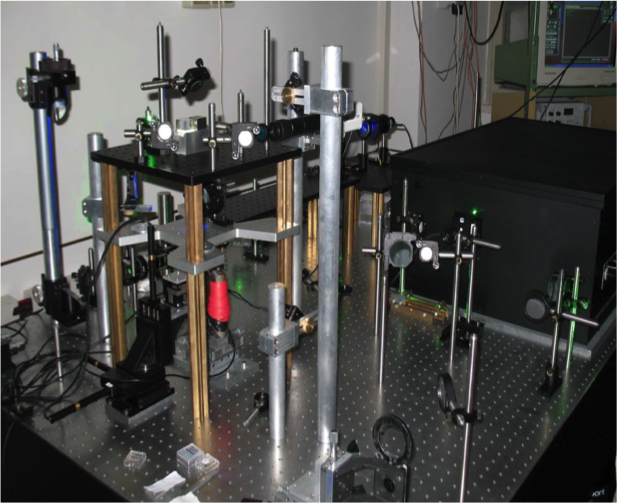Optical spectroscopy
Pump-probe Pump-probe
The pump-probe spectroscopy infrastructure provides in-situ probes of the excited state of the matter, i.e. in the time/frequency domain at the fs-ps scales.
IRS UHV reflection-absorption IR spectroscopy
An infrared spectrum is commonly obtained by passing infrared radiation through a sample and determining what fraction of the incident radiation is absorbed at a particular energy. The peak position in the absorption spectrum corresponds to the frequency of a vibration in the sample molecule.
Ellipsometry Ellipsometry
Ellipsometry is a contact-free, nondestructive method for characterization of the dielectric and optical properties (refractive index, absorption and thickness) of layered nanostructures in the size range of < 1 nm to several μm.
RS Raman spectroscopy
Raman spectroscopy (RS) investigates the vibrational properties of a sample and provides chemical as well as structural information. RS does not require any specific sample preparation, size or condition and may be combined with micron/nano spatial resolution when operated using a confocal microscope/TERS or SNOM configuration.
FTIR Fourier Transform Infra Red Spectroscopy and Spectromicroscopy
IR spectroscopy is based on the absorption of infrared radiation by matter. This leads to energetic transitions in the vibrational state of concrete chemical bonds. Since the frequencies that are absorbed by the molecules are characteristic of their structure, this technique is a powerful tool for qualitative and quantitative molecular analysis.
OS Optical spectroscopy
VUV/UV/Vis/NIR spectroscopy is the measurement of the attenuation of a beam of light after it passes through a sample or after reflection from a sample surface. It is useful to characterize absorption, transmission, and reflectivity of a variety of technologically important materials, such as gases, film, pigments, coatings, windows, and filters.
BLS Brillouin Light Scattering
Brillouin spectroscopy is an empirical spectroscopy technique which allows the determination of elastic moduli of materials. The technique uses inelastic scattering of light when it encounters acoustic phonons in a crystal, a process known as Brillouin scattering, to determine phonon energies and therefore interatomic potentials of a material.
TG TRANSIENT GRATING
The Transient Grating is a pump-probe technique allowing a direct access to the acoustic, magnetic and thermal degrees of freedom in condensed matter. Thanks to various laser sources, it allow to cover a dynamical range from hundreds of femtoseconds to hundreds of microseconds.









